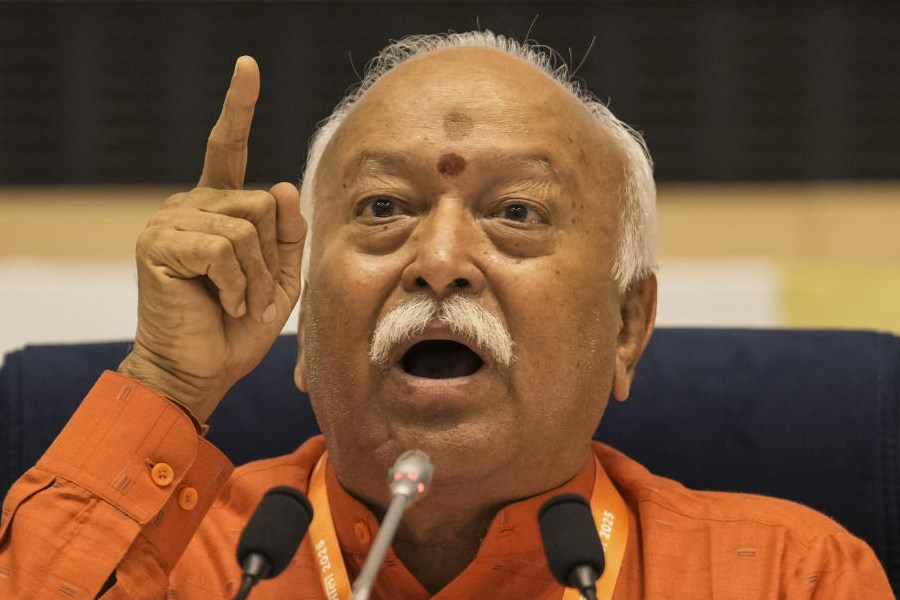.jpg)
New Delhi/Jamshedpur, May 15: Eastern India has had fewer of its trademark pre-monsoon thunderstorms called Nor'westers over the past three years, but weather scientists say they are unsure whether this decline just reflects natural fluctuations or indicates a long-term trend.
The Nor'westers - set off by a combination of eastern Indian topography, ground heating and moisture incursion into the atmosphere - normally hit Jharkhand and its neighbouring states between March and May every year. But unfavourable atmospheric conditions appear to have reduced their frequency, scientists say.
Jharkhand typically experiences nine to 10 high-intensity storms with thundershowers driven by the moisture incursion from the Bay of Bengal during the Nor'wester season, but the state's storm count has fluctuated from 15 in 2012 to six in 2013, seven in 2014, six in 2015 and only three so far this year.
"Humidity plays an important role, but westerly winds dominating during April and May has prevented moisture incursion and hence, the lower storm count," explained A.K. Sen, the director of Patna Meteorological Centre. Not a single storm took place in April because of such unfavourable conditions, he added.
Under prevailing conditions, cloud shells formed at relatively low height and were unable to retain moisture - this is said to be unfavourable for rain and storm. Such clouds should form at a height of at least 12km for them to trigger storm and rain, Sen pointed out.
"Dry westerly winds are unfavourable for Nor'westers," said A. Wadood, the agrometeorology adviser at Birsa Agricultural University in Kanke, on the outskirts of Ranchi.
The first summer saviour storm followed by thundershowers this year occurred on May 3, hitting Ranchi and Jamshedpur among other places. The second Nor'wester also hit the two towns on May 10 and brought over 40mm rain in Jamshedpur and Ranchi, and 65mm in Kanke, the origin of the storm. The third tempest whipped up a gale force of 40kmph in Jamshedpur and its surrounding areas on May 14, but rainfall was a measly 8.4mm in the steel city.
Jharkhand's plateau topography is a key factor that influences the birth of Nor'westers.
"Topography doesn't change, other factors do," said Someshwar Das, a senior scientist at India Meteorological Department, New Delhi, who has been studying Nor'westers and their mechanisms for over a decade. When the day's temperature rises six degrees above normal, excess ground heating of land results in convective currents that help in the formation of low cumulonimbus clouds bringing rain and gusty winds, brewing a typical Nor'wester, Das explained.
The heat and humidity over the Chotanagpur Plateau help thunderclouds to form and travel east, said Upendra Srivastava, a senior official at IMD, Ranchi. "This year some districts close to Bengal experienced easterly winds, but the flow was too weak for adequate moisture incursion - unless the winds are strong, they cannot trigger a storm," Srivastava said.
Das at IMD, Delhi, said it was unclear whether the gradual drop in the number of Nor'westers for three consecutive years compared to earlier times just reflected natural variability in atmospheric conditions from year to year or mirrored a long-term trend in the thunderstorm frequency.
"We have no evidence yet for any long-term changes in the frequency of these thunderstorms," Das said. "We'll need to analyse the frequency of Nor'westers over a period of two or three decades to determine whether there is a distinct declining trend or we're just seeing natural fluctuations," he said.
Scientists say the impact of global warming-induced climate change on Nor'westers is still unclear.
"Intense heating means more convection, which should actually translate into more storms," Das said. "But, nature has its own checks. Cloud formation reduces the amount of solar radiation falling on a surface, which could lower ground heating. We really don't know what impact, if any, global warming has or will have on Nor'westers," he added.

.jpg)








